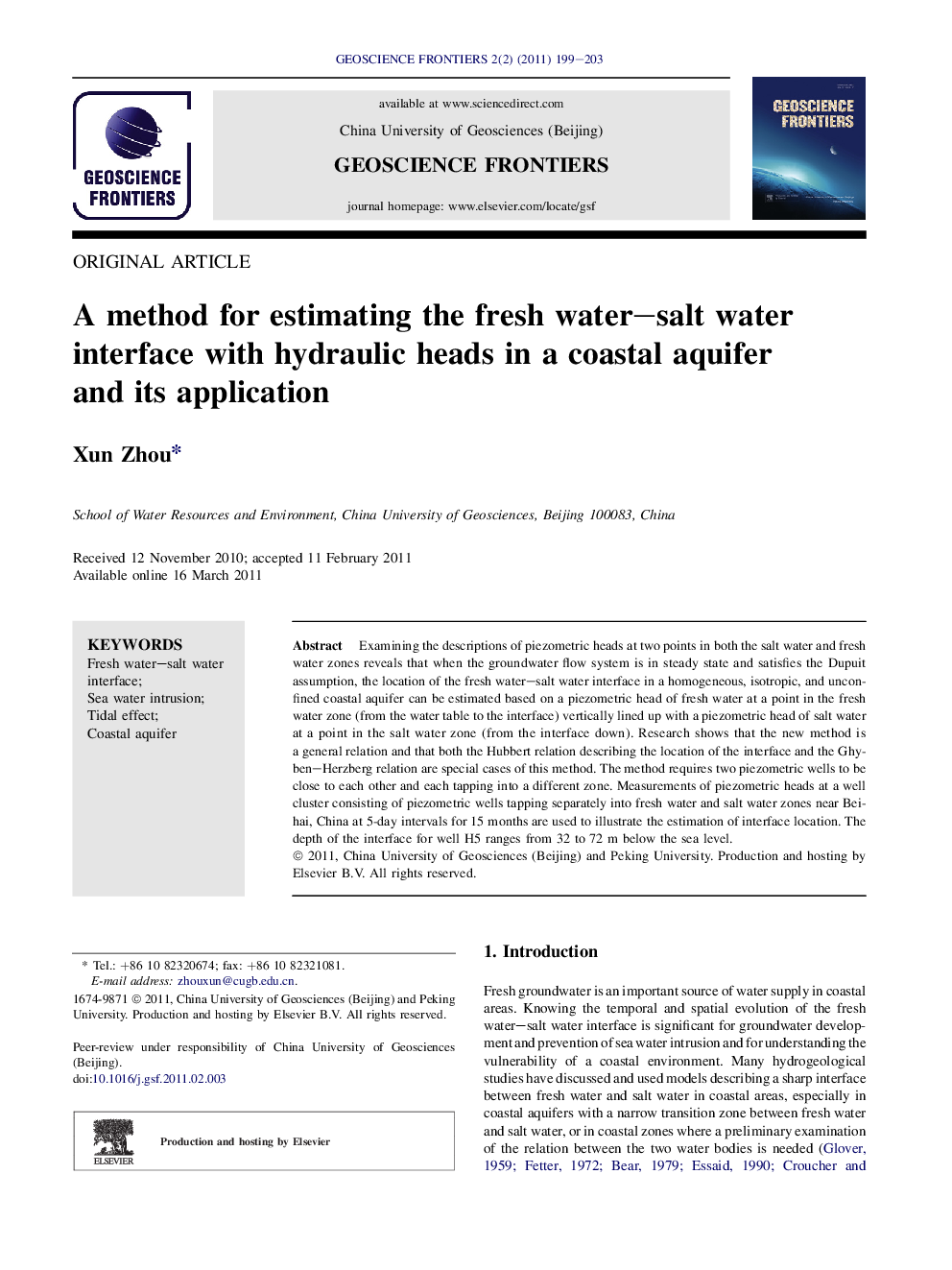| Article ID | Journal | Published Year | Pages | File Type |
|---|---|---|---|---|
| 4681926 | Geoscience Frontiers | 2011 | 5 Pages |
Examining the descriptions of piezometric heads at two points in both the salt water and fresh water zones reveals that when the groundwater flow system is in steady state and satisfies the Dupuit assumption, the location of the fresh water–salt water interface in a homogeneous, isotropic, and unconfined coastal aquifer can be estimated based on a piezometric head of fresh water at a point in the fresh water zone (from the water table to the interface) vertically lined up with a piezometric head of salt water at a point in the salt water zone (from the interface down). Research shows that the new method is a general relation and that both the Hubbert relation describing the location of the interface and the Ghyben–Herzberg relation are special cases of this method. The method requires two piezometric wells to be close to each other and each tapping into a different zone. Measurements of piezometric heads at a well cluster consisting of piezometric wells tapping separately into fresh water and salt water zones near Beihai, China at 5-day intervals for 15 months are used to illustrate the estimation of interface location. The depth of the interface for well H5 ranges from 32 to 72 m below the sea level.
